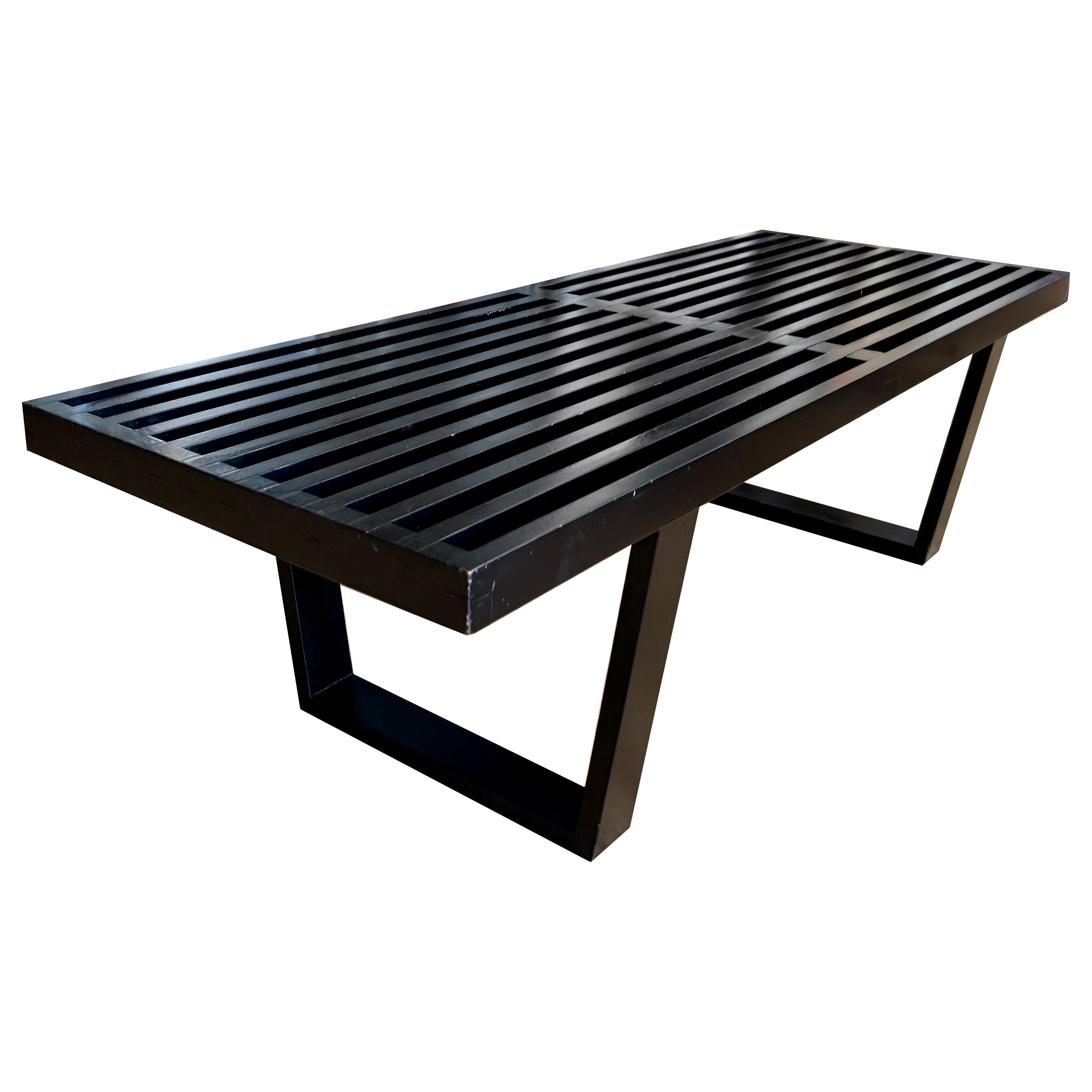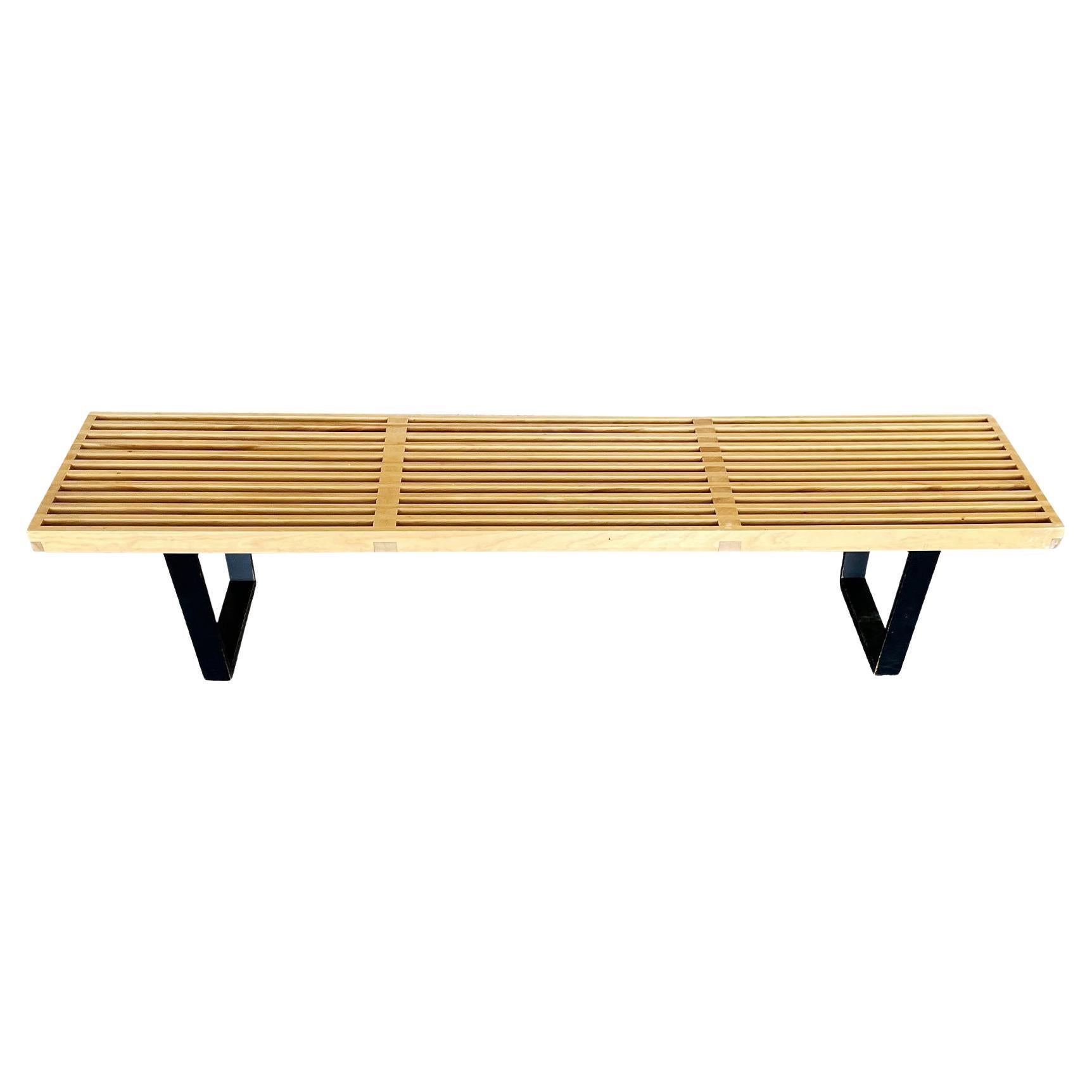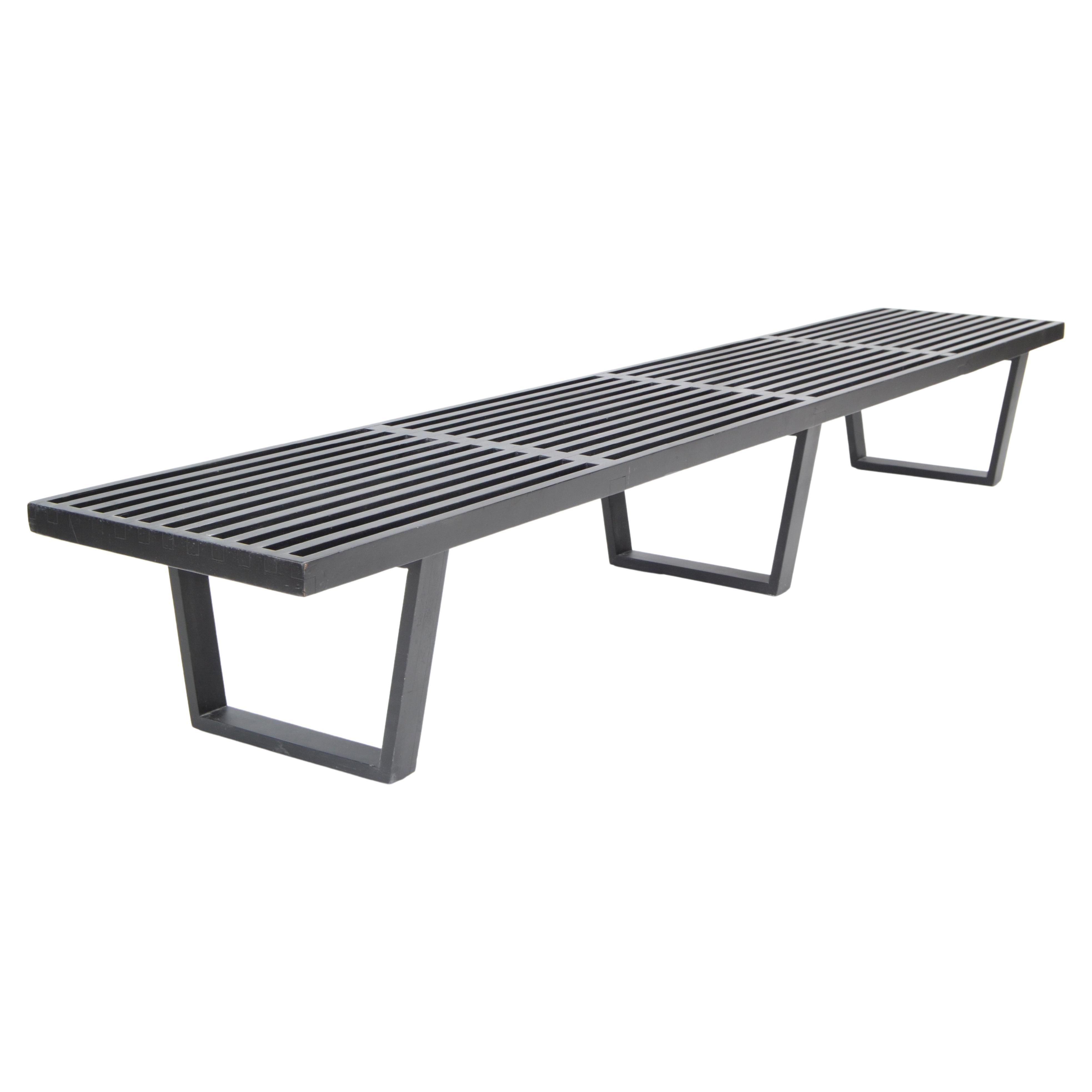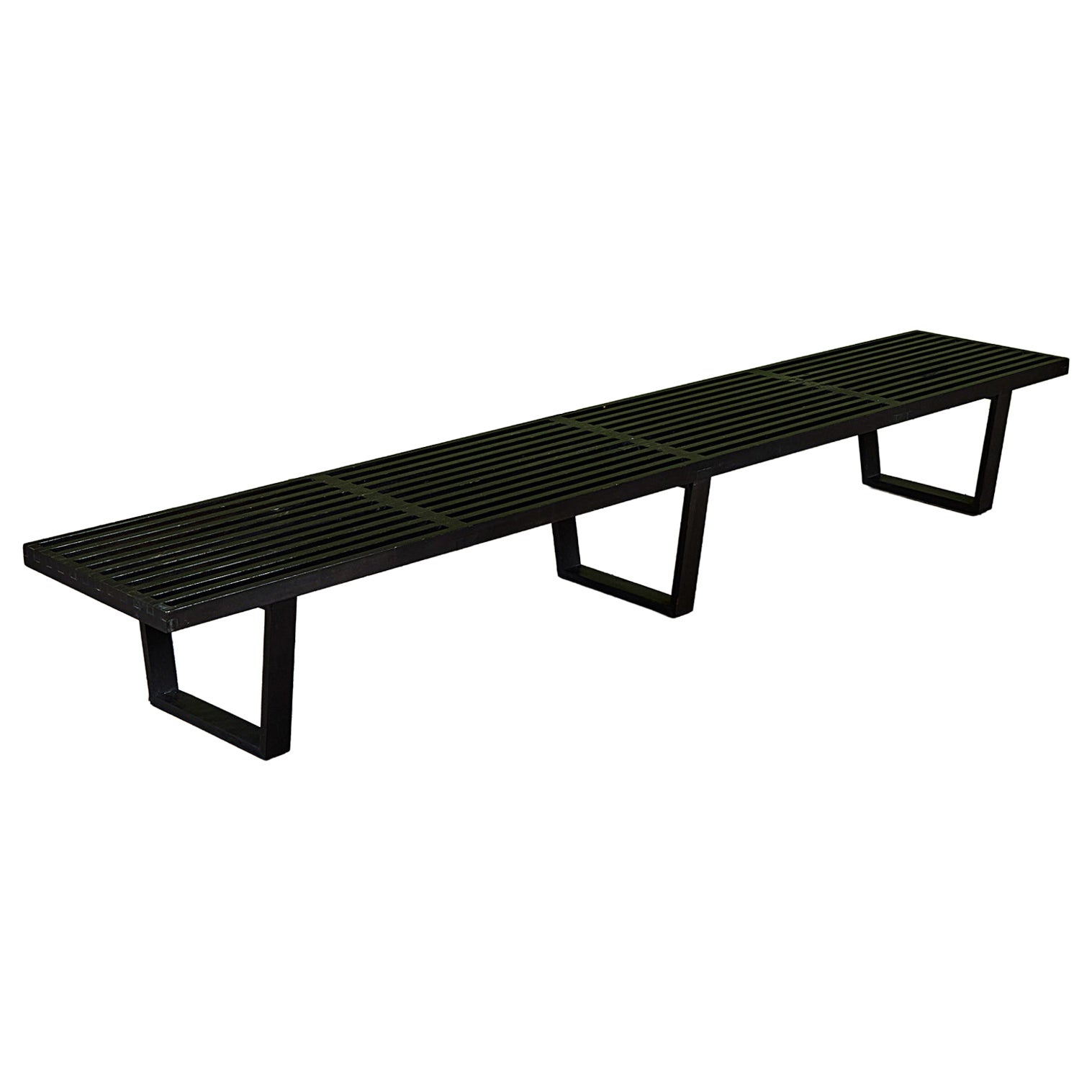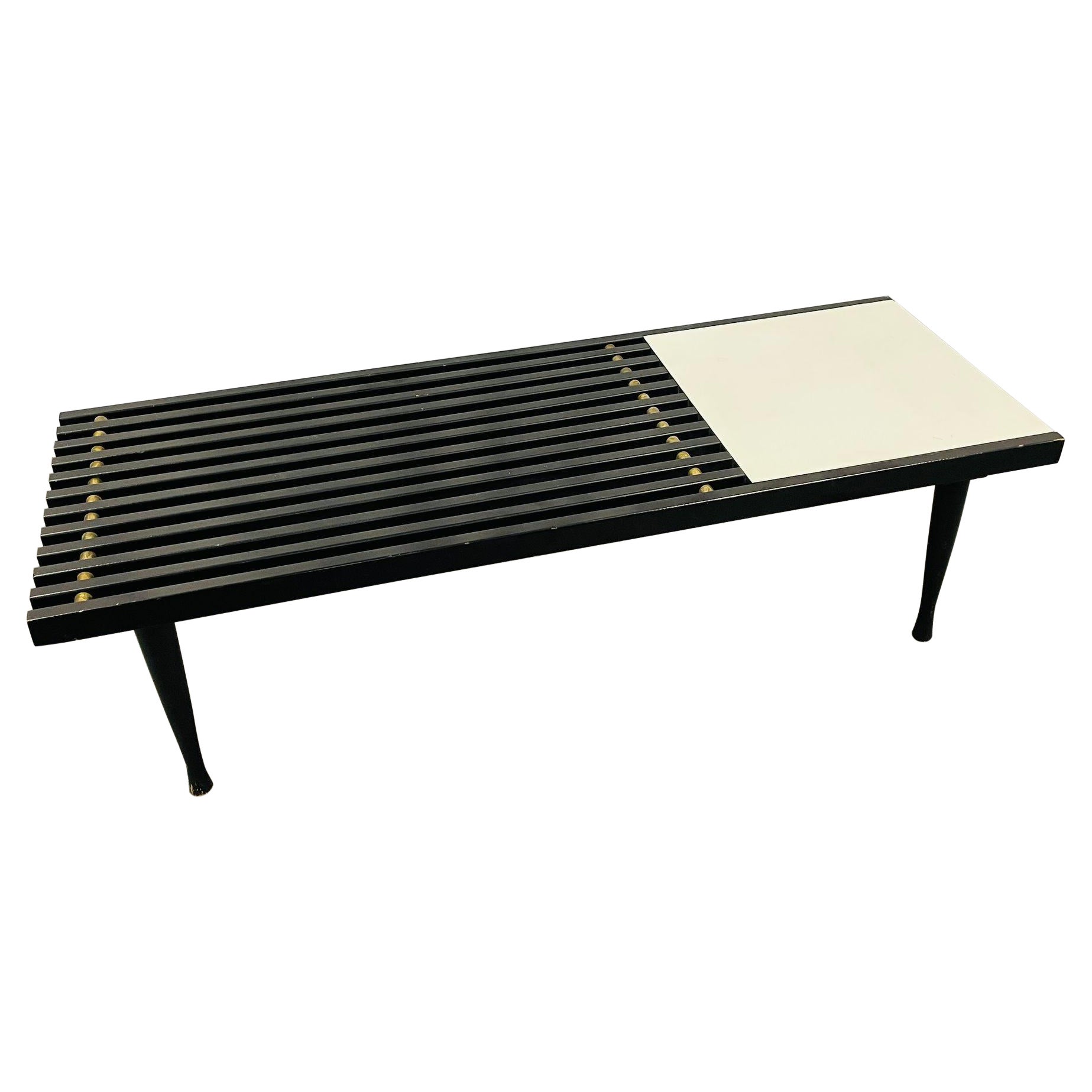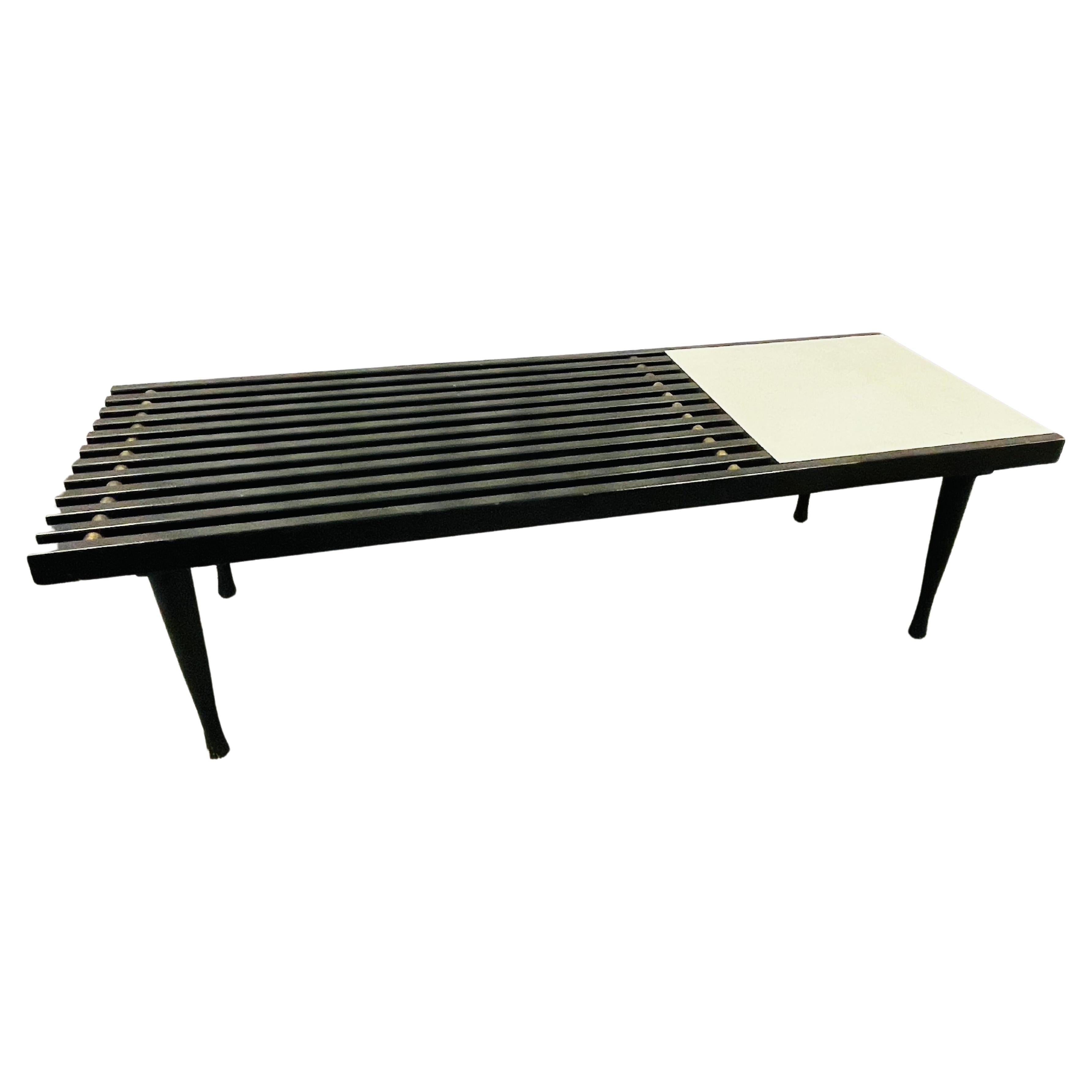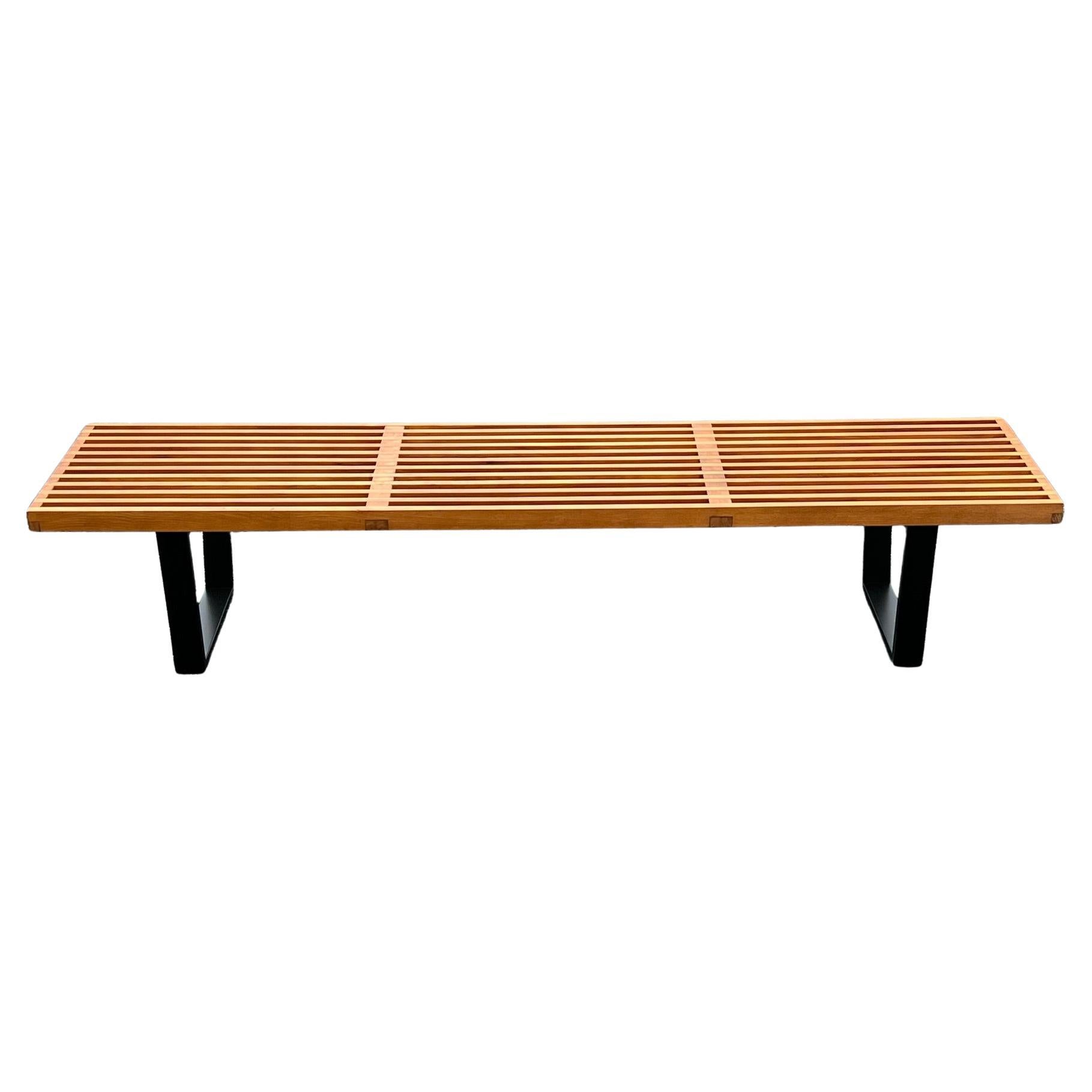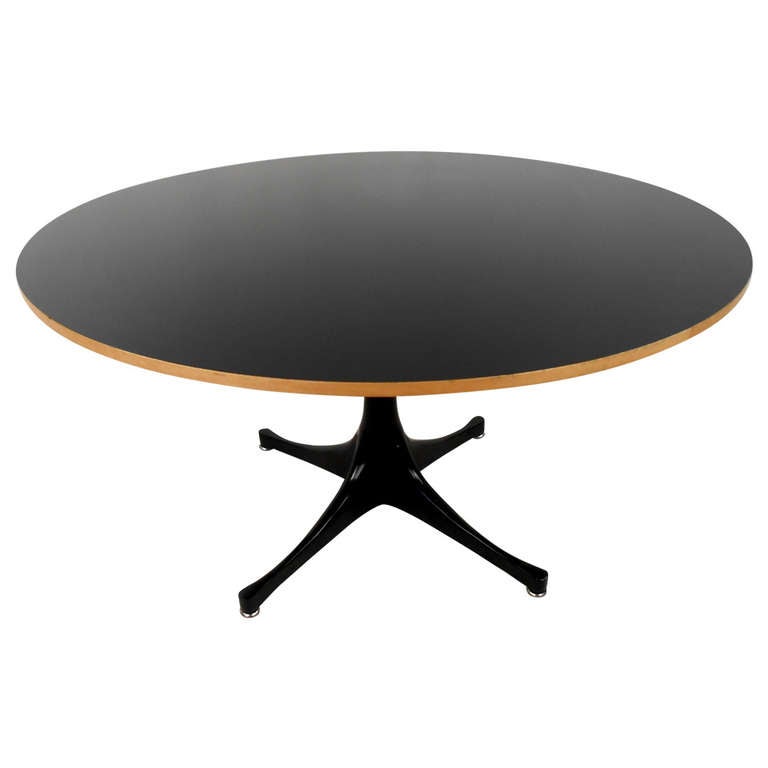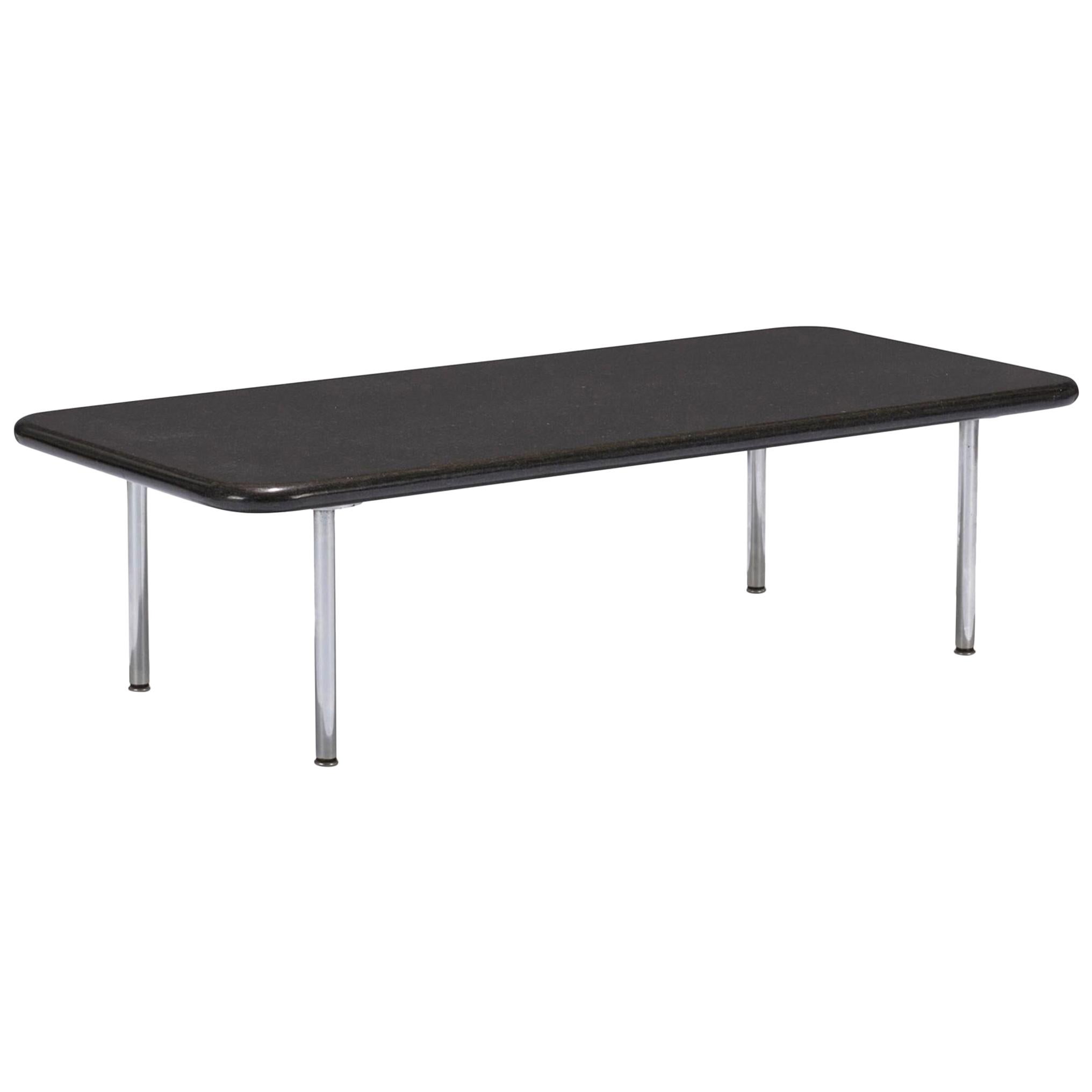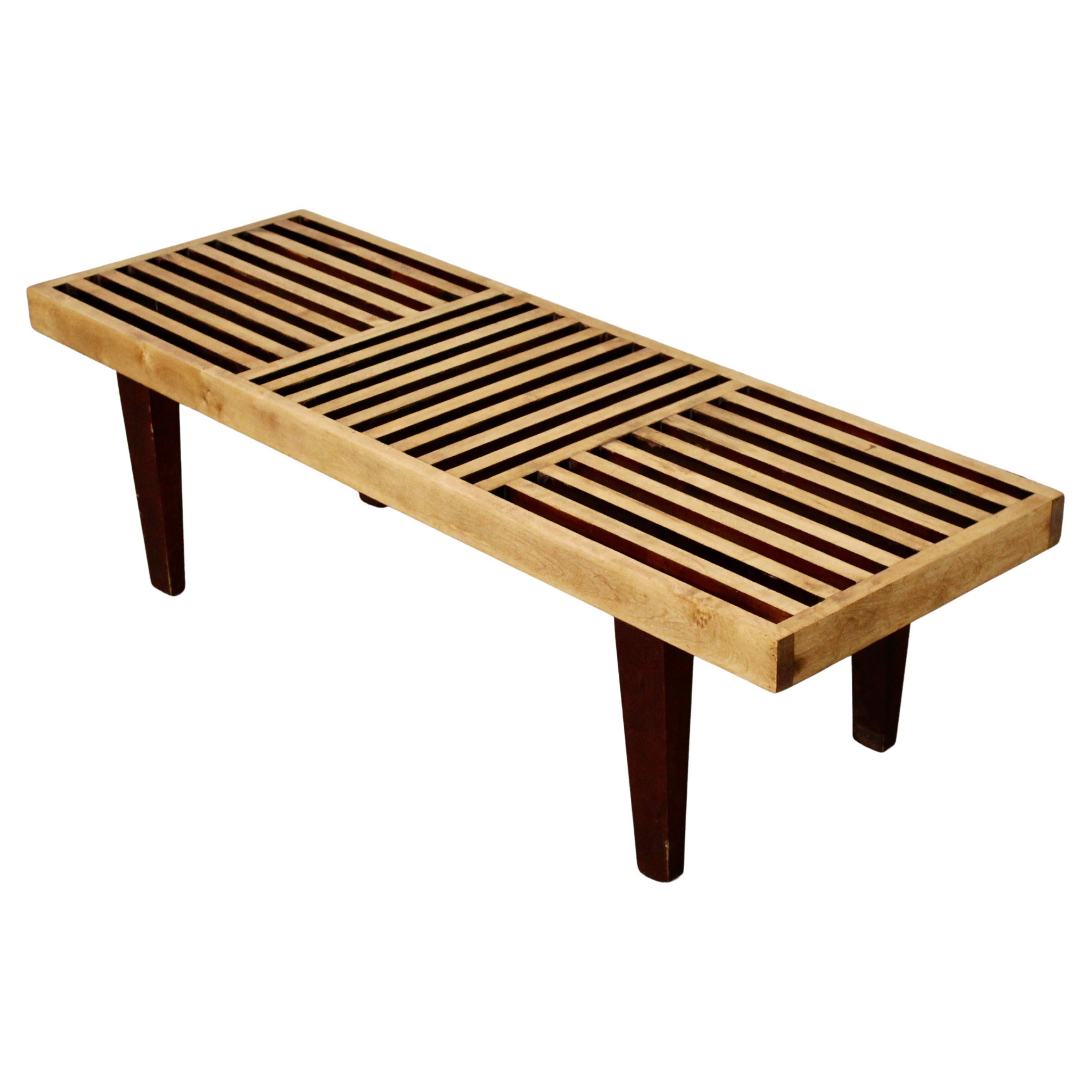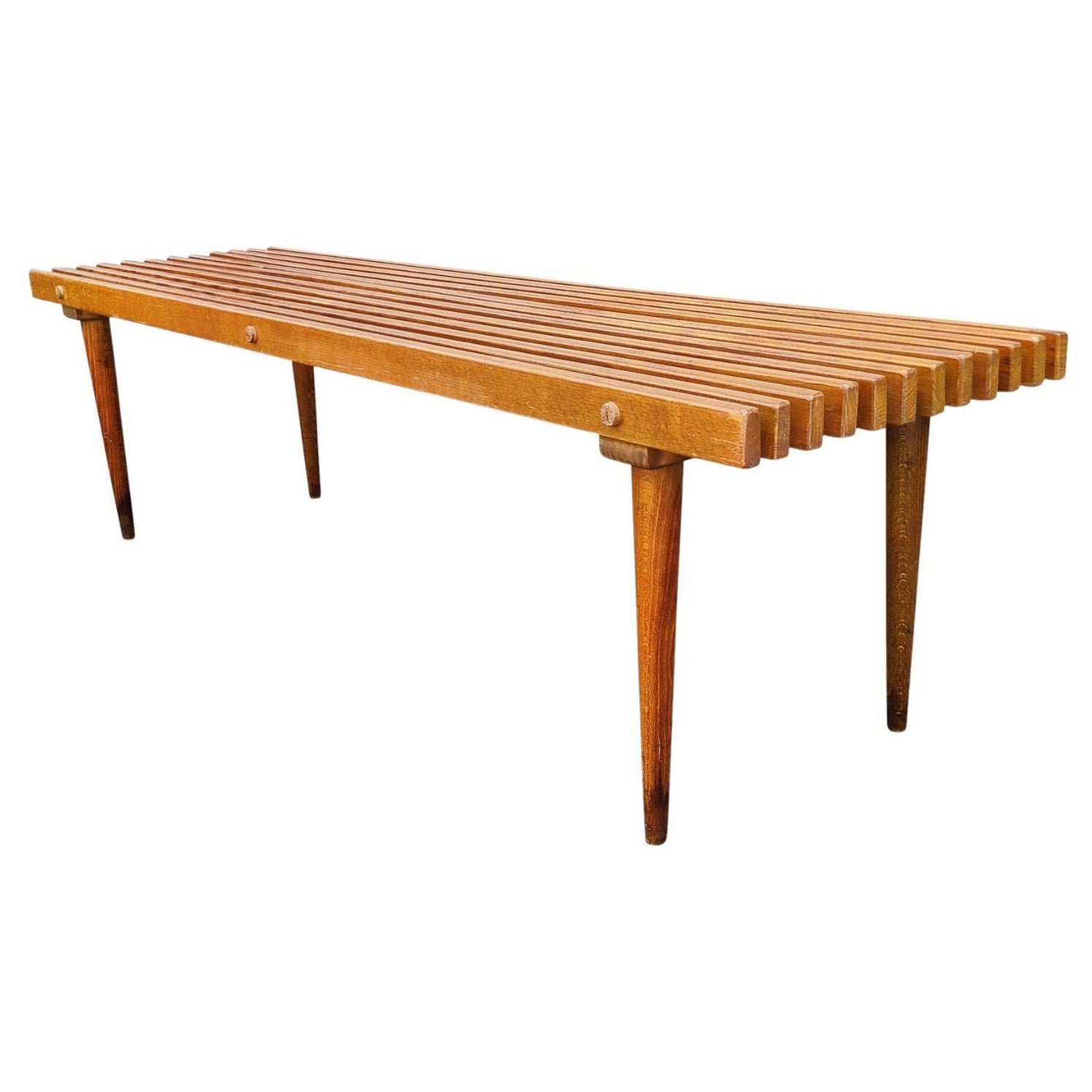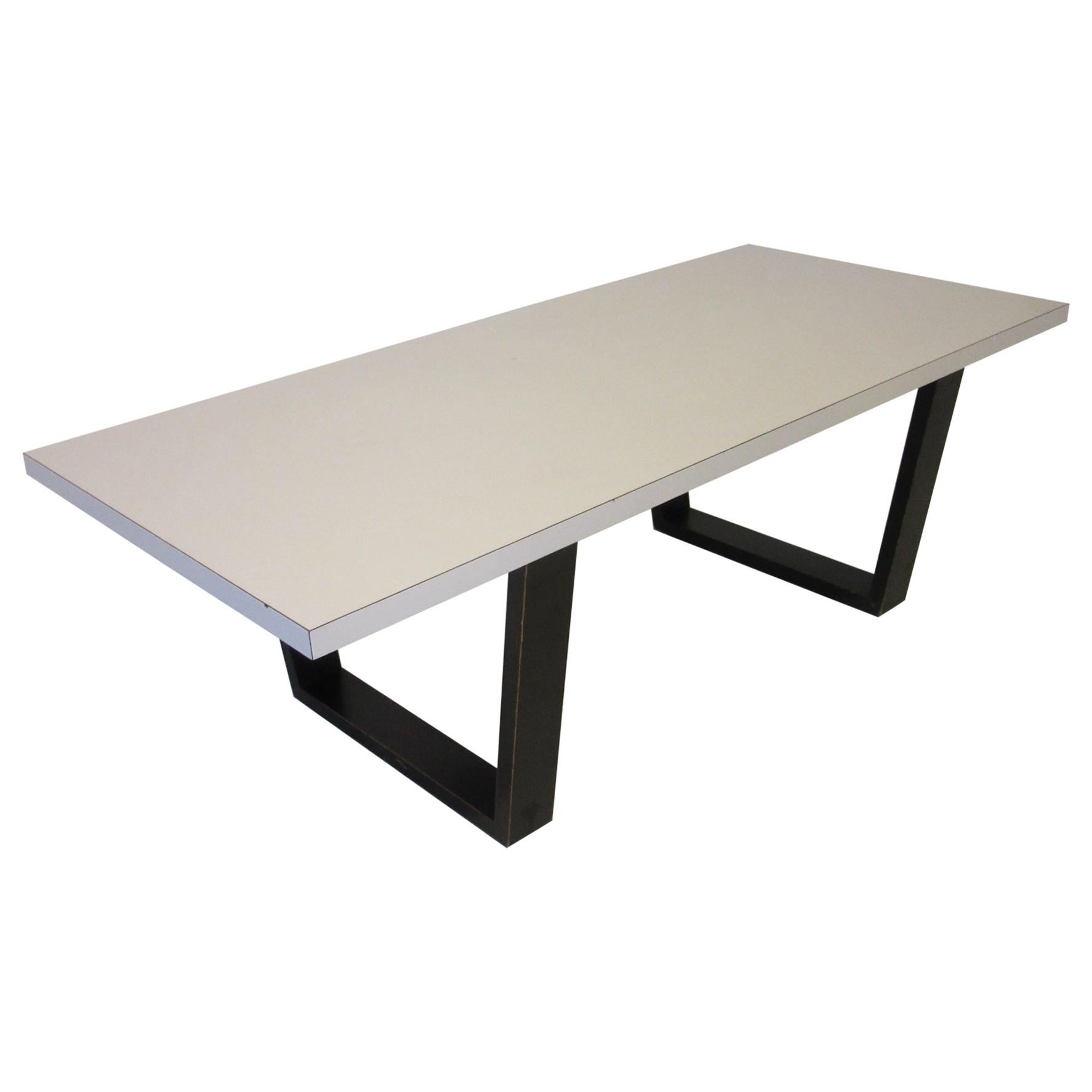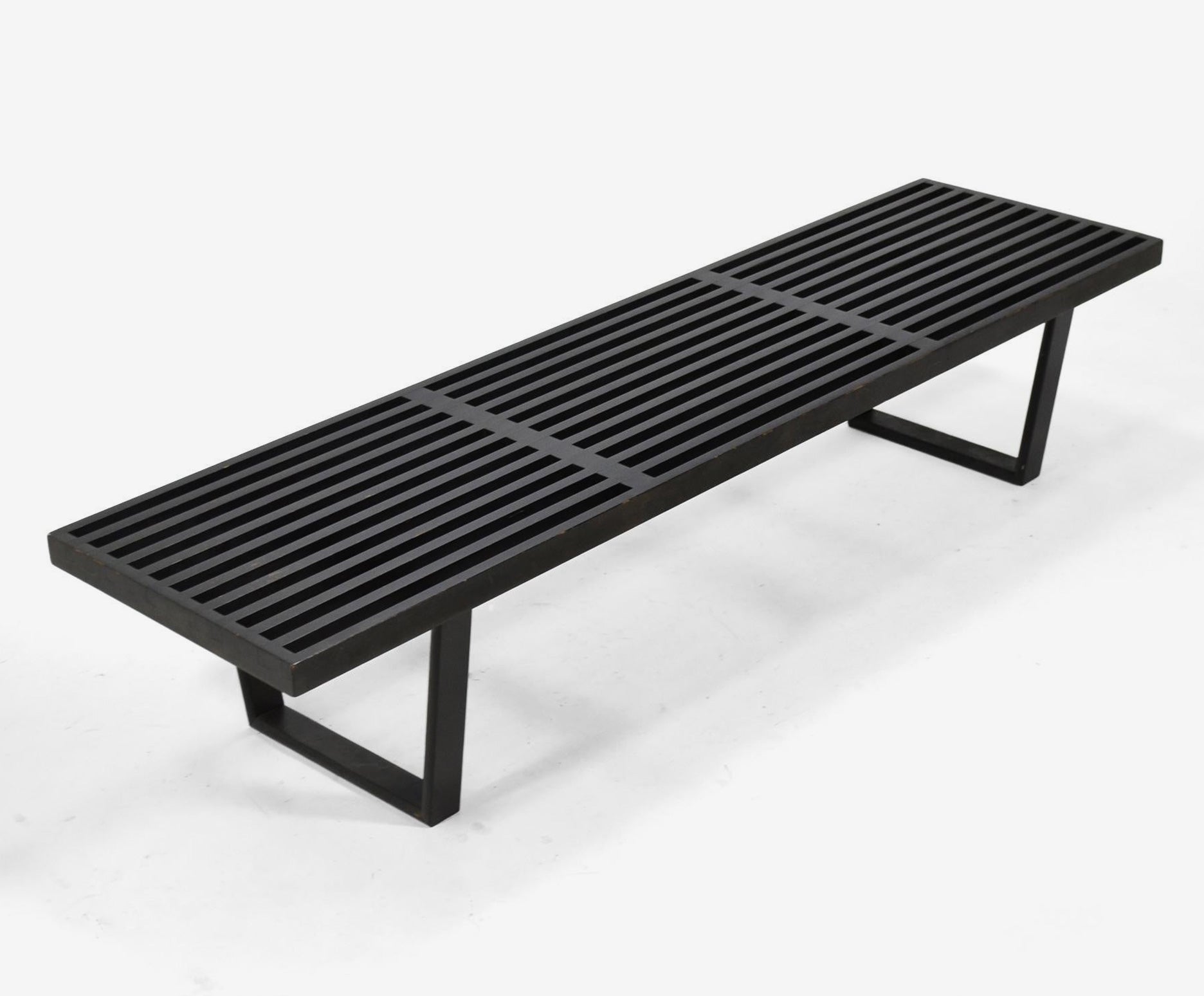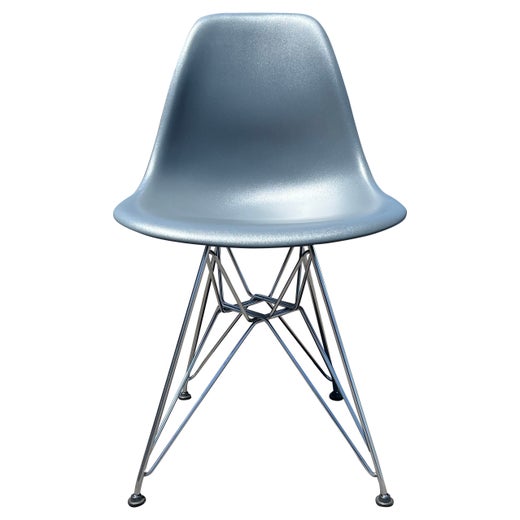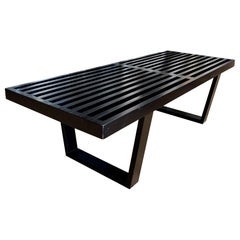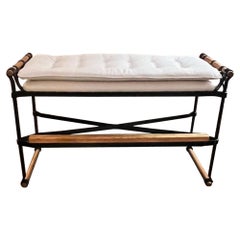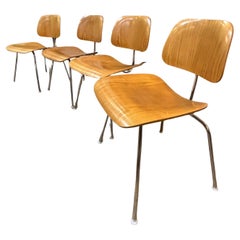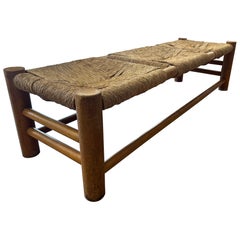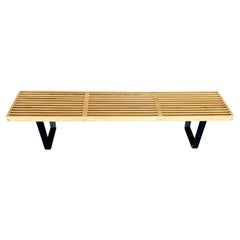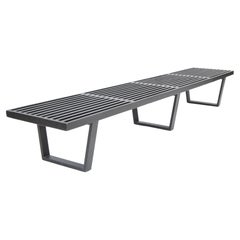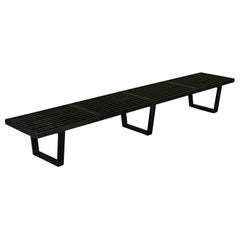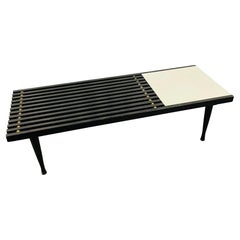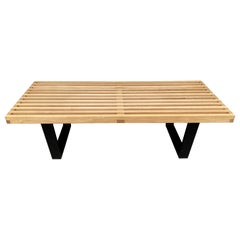
Mid-Century Modern George Nelson for Herman Miller Slat Bench
View Similar Items
Mid-Century Modern George Nelson for Herman Miller Slat Bench
About the Item
- Creator:George Nelson (Maker),Herman Miller (Manufacturer)
- Design:
- Dimensions:Height: 18 in (45.72 cm)Width: 48 in (121.92 cm)Length: 18 in (45.72 cm)Seat Height: 14 in (35.56 cm)
- Style:Mid-Century Modern (Of the Period)
- Materials and Techniques:
- Place of Origin:
- Period:
- Date of Manufacture:2000
- Condition:
- Seller Location:San Antonio, TX
- Reference Number:1stDibs: LU5057129129572
Nelson Platform Bench
With its clean lines, sculptural shape and use of organic materials, George Nelson’s Platform bench reflected the American designer’s background in architecture and embodied modernist design. The bench, critical to the Basic Cabinet series he created for Michigan manufacturer Herman Miller — his first collection for the maker — demonstrates Nelson’s enthusiasm for honest, pared-down design.
Nelson (1908–86) grew up in Connecticut and studied architecture at Yale University. While on a post-grad fellowship in Rome, he interviewed numerous pioneering modernist designers, such as Walter Gropius, Ludwig Mies van der Rohe and more for profiles that were published in American architecture journal Pencil Points. Nelson subsequently lectured at Yale and secured prominent architectural commissions, but his editor roles at Architectural Forum and Fortune magazine proved pivotal to his career. After Herman Miller founder D.J. De Pree caught wind of Nelson’s Storagewall — a modular storage concept codeveloped with architect Henry Wright that was featured in Life and in the pair’s book, Tomorrow’s House — he invited him to design modern furniture for the company.
In 1946, Herman Miller debuted Nelson’s spare and versatile slatted-wood Platform bench. Initially comprising a birch top and ebonized wood legs, the bench’s metal base was integrated as an alternative in 1954. Nelson created his Platform bench for his office at Fortune before it found a home at Herman Miller, where it was marketed as seating, a low table or, per an Irving Harper–designed ad, a “plant rest.” It was discontinued in 1967, but the company reintroduced it in 1994. Today, the Nelson Platform bench is available from Herman Miller as well as Vitra (“Nelson bench”) in various sizes and finishes.
Herman Miller
No other business of its kind did more than the Herman Miller Furniture Company to introduce modern design into American homes. Working with legendary designers such as Charles and Ray Eames, George Nelson and Alexander Girard, the Zeeland, Michigan-based firm fostered some of the boldest expressions of what we now call mid-century modern style. In doing so, Herman Miller produced some of the most beautiful, iconic and, one can even say, noblest chairs, sofas, tables and other furniture ever.
Founded in 1923, Herman Miller was originally known for grand historicist bedroom suites: heavily ornamented wood furniture that appealed to a high-minded, wealthier clientele. The company — named for its chief financial backer — began to suffer in the early 1930s as the Great Depression hit, and D.J. De Pree, the company’s CEO, feared bankruptcy. In 1932, aid came in the form of Gilbert Rohde, a self-taught furniture designer who had traveled widely in Europe, absorbing details of the Art Deco movement and other modernist influences. After persuading De Pree that the growing middle class required smaller, lighter household furnishings, Rohde set a new course for Herman Miller, creating sleek chairs, tables and cabinetry that were the essence of the Streamline Moderne style.
Rohde died suddenly in 1944. The following year, De Pree turned to George Nelson, an architect who had written widely about modern furniture design. Under Nelson’s leadership, Herman Miller would embrace new technologies and materials and audacious biomorphic forms.
Some of the pieces the company produced are now emblems of 20th century American design, including the Eames lounge chair and ottoman and Nelson’s Marshmallow sofa and Coconut chair. Such instantly recognizable furnishings have become timeless — staples of a modernist décor; striking, offbeat notes in traditional environments.
Find a range of vintage Herman Miller office chairs, desks, coffee tables and other furniture on 1stDibs.
More From This Seller
View AllEarly 2000s American Mid-Century Modern Benches
Wood
Mid-20th Century Mid-Century Modern Benches
Wrought Iron
Vintage 1980s American Mid-Century Modern Dining Room Chairs
Metal
Mid-20th Century Mexican Rustic Benches
Rush, Wood
Mid-20th Century American Mid-Century Modern Chandeliers and Pendants
Chrome
Mid-20th Century Italian Mid-Century Modern Floor Lamps
Marble, Aluminum, Brass
You May Also Like
Mid-20th Century American Mid-Century Modern Benches
Maple
Mid-20th Century American Mid-Century Modern Benches
Wood, Birch
Mid-20th Century American Mid-Century Modern Benches
Maple
Vintage 1960s Coffee and Cocktail Tables
Brass
Late 20th Century Mid-Century Modern Coffee and Cocktail Tables
Wood
Vintage 1950s American Mid-Century Modern Benches
Maple
Recently Viewed
View AllRead More
The 21 Most Popular Mid-Century Modern Chairs
You know the designs, now get the stories about how they came to be.
A Guide to Herman Miller’s Most Iconic Furniture
The prolific manufacturer has partnered with many of the world’s top designers since opening its doors in 1923. Here are some of the company’s greatest hits, which helped transform the American home and office.
